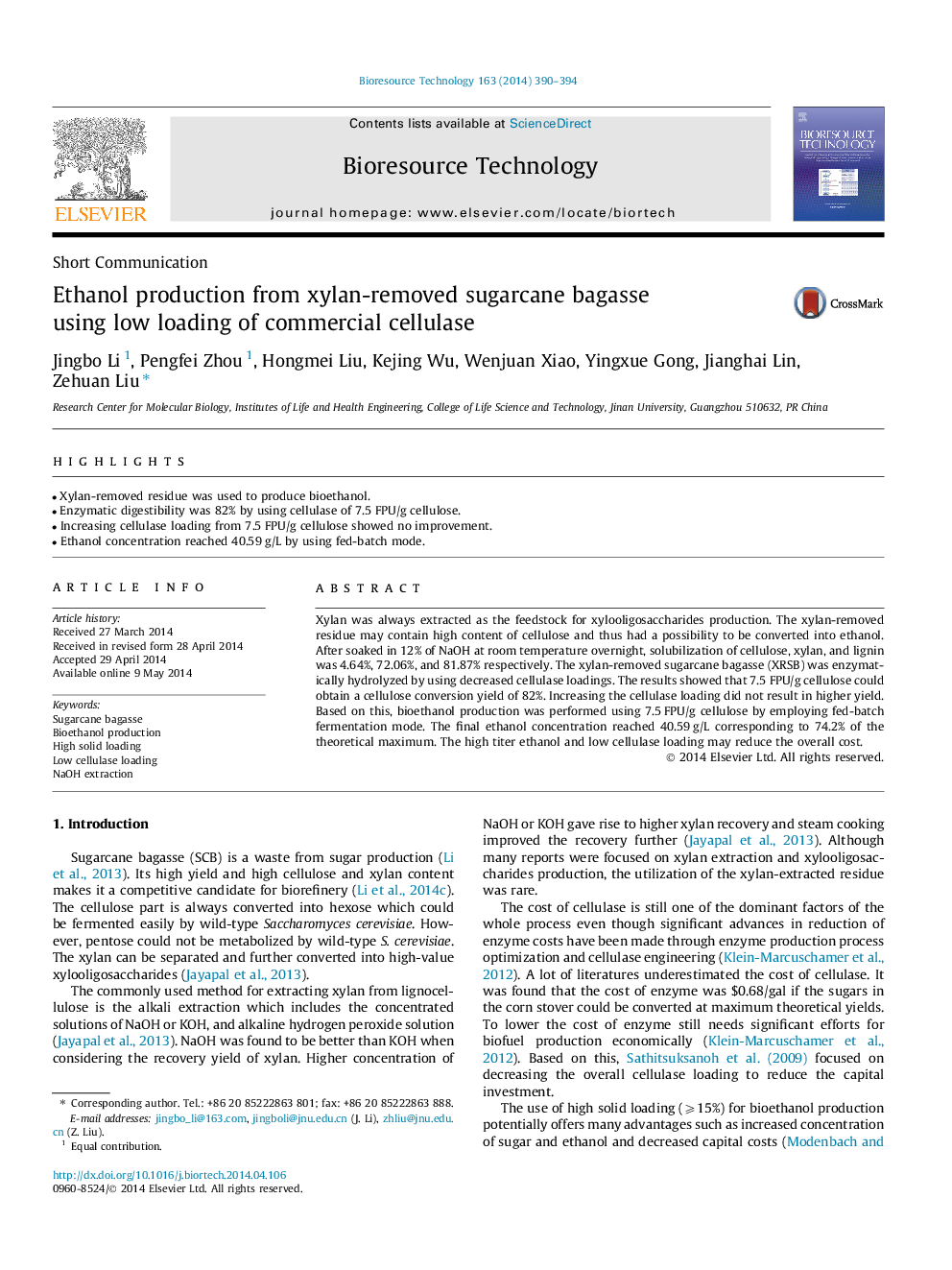| کد مقاله | کد نشریه | سال انتشار | مقاله انگلیسی | نسخه تمام متن |
|---|---|---|---|---|
| 680897 | 1459980 | 2014 | 5 صفحه PDF | دانلود رایگان |
• Xylan-removed residue was used to produce bioethanol.
• Enzymatic digestibility was 82% by using cellulase of 7.5 FPU/g cellulose.
• Increasing cellulase loading from 7.5 FPU/g cellulose showed no improvement.
• Ethanol concentration reached 40.59 g/L by using fed-batch mode.
Xylan was always extracted as the feedstock for xylooligosaccharides production. The xylan-removed residue may contain high content of cellulose and thus had a possibility to be converted into ethanol. After soaked in 12% of NaOH at room temperature overnight, solubilization of cellulose, xylan, and lignin was 4.64%, 72.06%, and 81.87% respectively. The xylan-removed sugarcane bagasse (XRSB) was enzymatically hydrolyzed by using decreased cellulase loadings. The results showed that 7.5 FPU/g cellulose could obtain a cellulose conversion yield of 82%. Increasing the cellulase loading did not result in higher yield. Based on this, bioethanol production was performed using 7.5 FPU/g cellulose by employing fed-batch fermentation mode. The final ethanol concentration reached 40.59 g/L corresponding to 74.2% of the theoretical maximum. The high titer ethanol and low cellulase loading may reduce the overall cost.
Journal: Bioresource Technology - Volume 163, July 2014, Pages 390–394
